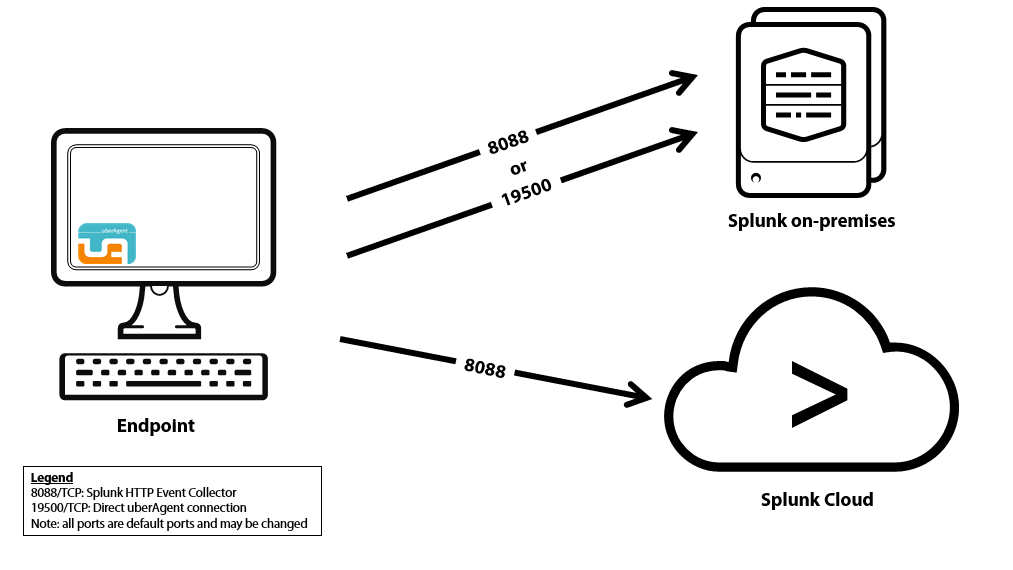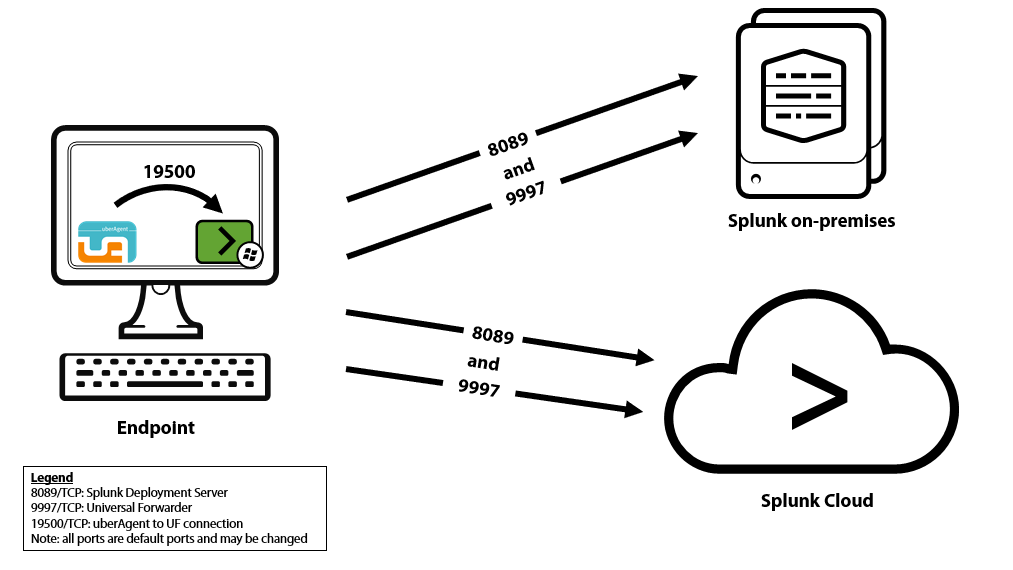Architecture Options
Recommended: Standalone
In this recommended configuration uberAgent runs as its own Windows system service and talks directly to the Splunk servers. This has the advantage that the overall footprint on the monitored endpoints is smaller compared to architecture options that require Universal Forwarder.
Configuration highlights
- Monitored endpoints: uberAgent runs as a system service
- Splunk indexers: either a TCP port is opened or HTTP Event Collector is configured
- Communications: uberAgent sends data directly from the endpoint to the Splunk servers’ TCP port or HTTP Event Collector
Pros
- Smallest footprint
- Data can be transferred encrypted via HTTPS and authenticated with a REST token
Cons
- No optional storage of collected data on disk before sending to Splunk
Alternative: Standalone With Splunk’s Universal Forwarder
Please note that with this configuration option, data is transmitted unencrypted over TCP from uberAgent to Splunks Universal Forwarder on the local machine. Therefore, we recommend that you use the direct connection as described before, which enables encrypted and authenticated data transmission.
Similar to Standalone mode, but uberAgent sends the data it collects to a locally installed Splunk Universal Forwarder. If you have deployed Universal Forwarder on your monitored endpoints anyway you might want the forwarder to handle all Splunk communications.
Configuration highlights
- Monitored endpoints: uberAgent runs as a system service
- Universal Forwarder: a TCP port is opened on each endpoint (for local access only)
- Communications: uberAgent sends data to the local forwarder’s TCP port which in turn sends data to the Splunk indexers
Pros
- All Splunk communications are handled by Splunk components
- Additional data can be collected via Universal Forwarder (log files, Windows event logs, scripts)
- Collected data can optionally be persisted to disk before sending off to Splunk
Cons
- Larger footprint than the recommended architecture
- On the local machine, data is sent unencrypted and unauthenticated over TCP

